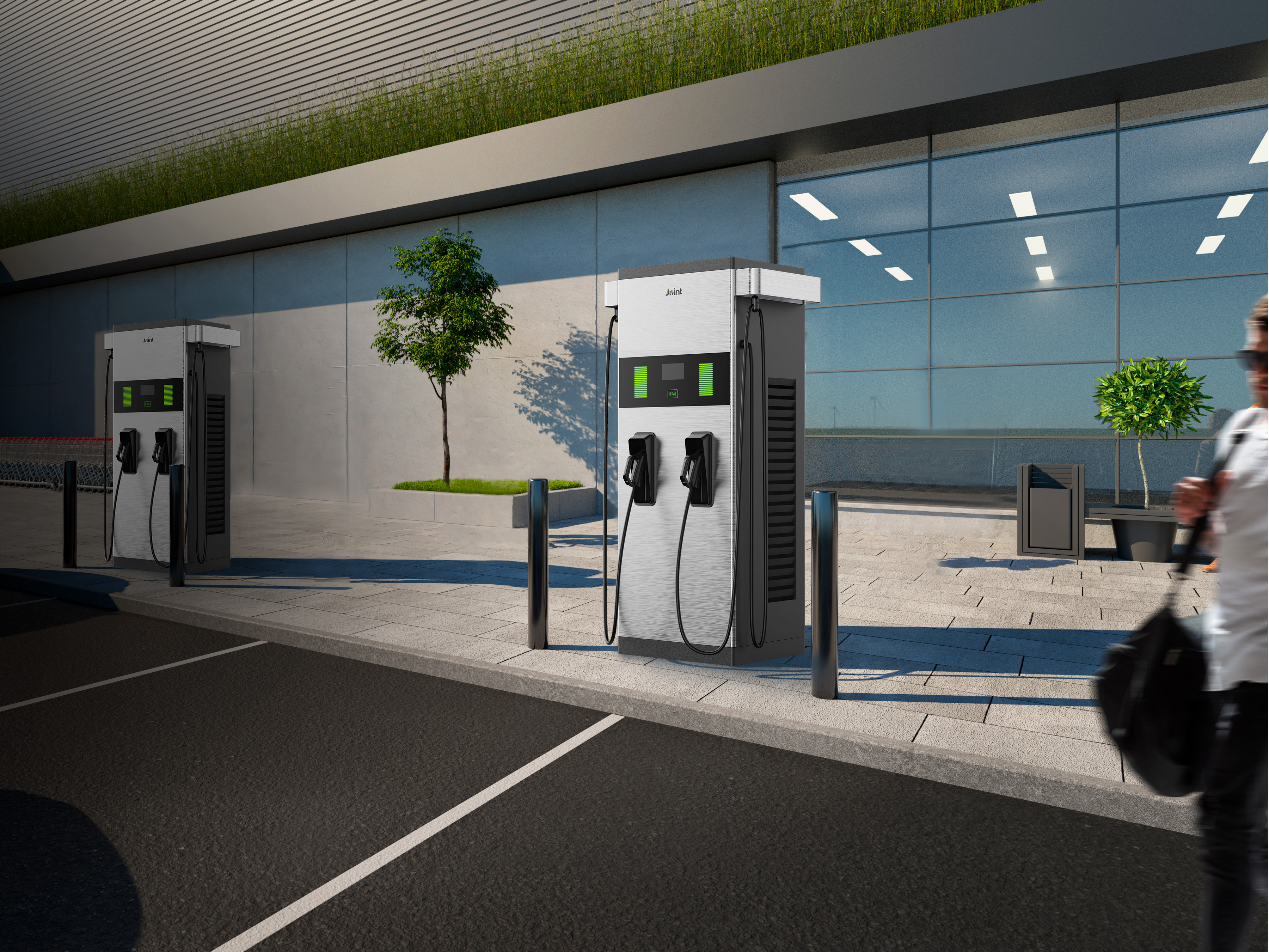
Dual Port Electric Vehicle Charger: Improving Electric Vehicle Charging Efficiency
The popularity of electric vehicles (EVs) has driven continuous innovation in charging technology. In order to meet the needs of the growing EV user community, EV charger suppliers have come up with more efficient and faster EV charging solutions. The double-ended EV charger has become an important device in the charging infrastructure. This innovative charging solution is designed to meet the needs of the growing EV user community by increasing the efficiency of charging stations and reducing user waiting time, especially during peak hours or busy EV charging station scenarios.
What is a Dual Port EV Charger?
The Dual Port EV Charger incorporates advanced technical features and intelligent design to cater to the simultaneous charging of multiple vehicles. The charger is equipped with two separate charging sockets and bases, each with intelligent identification and management features.
The EV owner inserts the EV plug into one of the charging sockets and the charger immediately recognizes and confirms the connection through the built-in intelligent system. The system then dynamically adjusts the charging power and current distribution according to the type of connected EV, battery status, and charging demand to ensure that each vehicle is efficiently charged at the maximum permissible power.
The dual-port charger employs advanced communication technology to enable comprehensive management of the charging process through real-time monitoring of parameters such as vehicle connection status, battery temperature, and charging progress. As soon as a vehicle finishes charging or disconnects, the charger makes immediate adjustments to avoid wasting resources and optimize the overall efficiency of the charging station.
In addition, the dual-port charger is compatible with different charging standards and supports a wide range of EV models, making it a flexible and versatile charging solution. Integrating these technical features, dual port EV chargers provide charging stations with more efficient and smarter charging services, driving continuous innovation and progress in EV charging technology.
How do I use a dual port EV charger?
Using a dual port EV charger is usually a relatively simple process. Users need to select a parking spot with a dual port charger and then connect to the charger’s socket using the EV’s charging plug. Through the charging service app provided by the twin EV charging station or through the interface of the station itself, the user can initiate the charging process, after which both vehicles will be charged at the same time. Below are the specific steps for using the twin EV charger:
- Finding the right dual-port charging station: Users will first need to find a charging station equipped with dual EV chargers. This can be done through an EV app, an online mapping service, or a car navigation system. Once a nearby charging station has been found, the user can then plan a trip to ensure that the charging station is available.
- Plugging in the EV connector: Once the user arrives at the charging station, they need to plug the EV connector into the charging socket of the dual-port EV charger. As the dual-port charger can provide charging for two EVs, users can choose one of the sockets according to their actual needs.
- Vehicle identification and communication: Once the connector is plugged in, the charger starts to identify and communicate with the EV. Through the vehicle’s communication interface, the charger obtains the vehicle’s battery status, charging demand, and other information to make personalized adjustments to the charging process.
- Intelligent Power Distribution: The dual-port EV charger features an intelligent power distribution system that dynamically adjusts the power output based on battery status and charging demand. This ensures that when charging services are provided by both sockets at the same time, each vehicle can get the appropriate charging power to maximize charging efficiency.
- Real-time monitoring of the charging process: Users can monitor the charging process in real-time through the EV dashboard or the relevant charging application. This includes information such as charging speed, remaining charging time, etc., enabling the user to understand the charging status of the vehicle and make timely adjustments.
- Completion of charging and disconnecting the connector: Once the EV has reached the charging target set by the user, or the user needs to disconnect charging, they can easily remove the connector from the socket. Once the charging process is complete, the user can continue driving.
- Payment and departure: At some charging stations, users may be required to make a payment. This can be done through the app or through the payment system provided by the station. Once payment is complete, the user can leave the station and continue their journey.
Through this series of steps, users are able to take full advantage of the efficient and intelligent charging services offered by dual-port EV chargers for their EV charging needs.
Simultaneous EV Charging with Joint Charging Solutions
As an EV charging equipment manufacturer, Joint is committed to providing reliable and efficient EV charging equipment and EV charging solutions. Joint’s Dual EV Charger is designed with an intelligent management system to provide efficient charging for two EVs at the same time. This solution improves charging efficiency while providing users with a more convenient charging experience, further promoting the sustainable development of electric vehicles.
Conclusion
Dual-port EV chargers have reinvigorated the EV charging infrastructure, providing users with faster and more convenient charging options. As these technologies continue to be innovated and rolled out, the EV charging experience will become even more seamless and efficient, working together to advance the EV industry.


